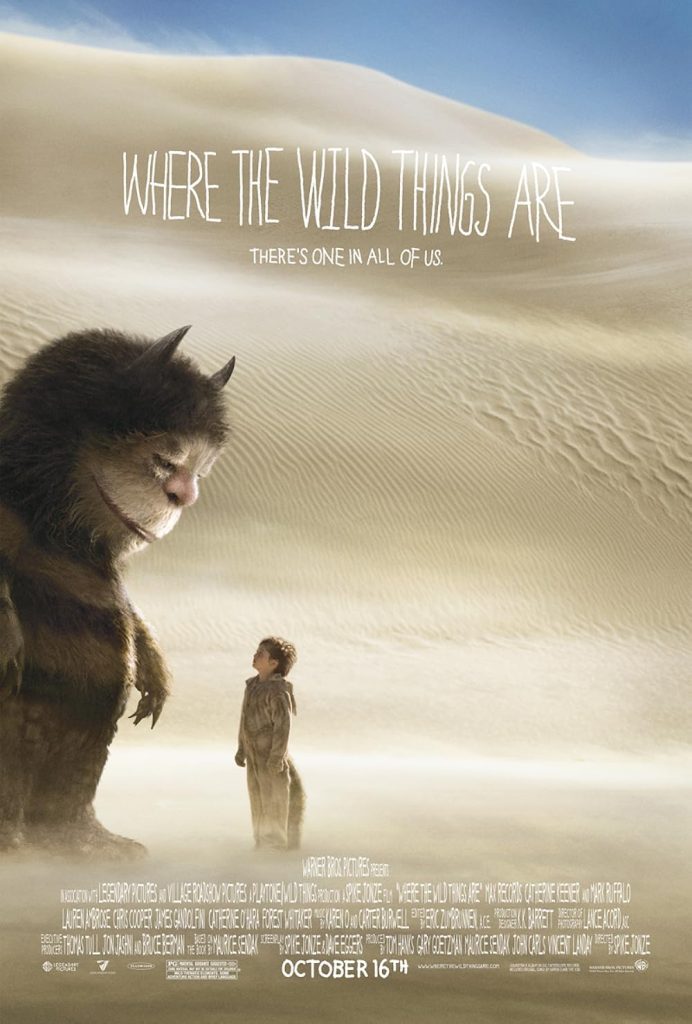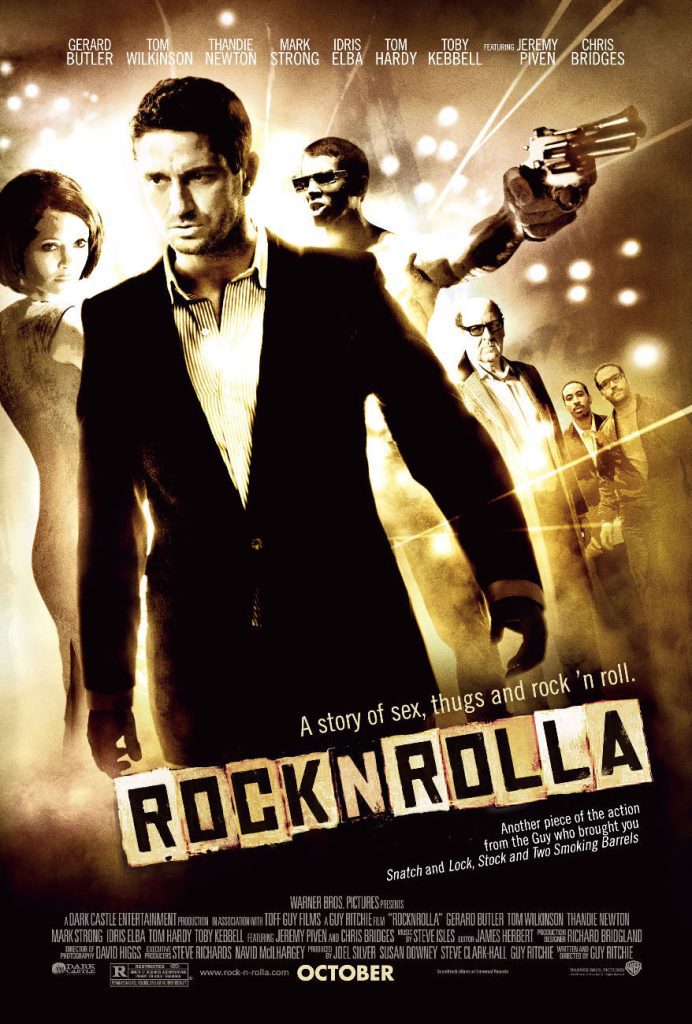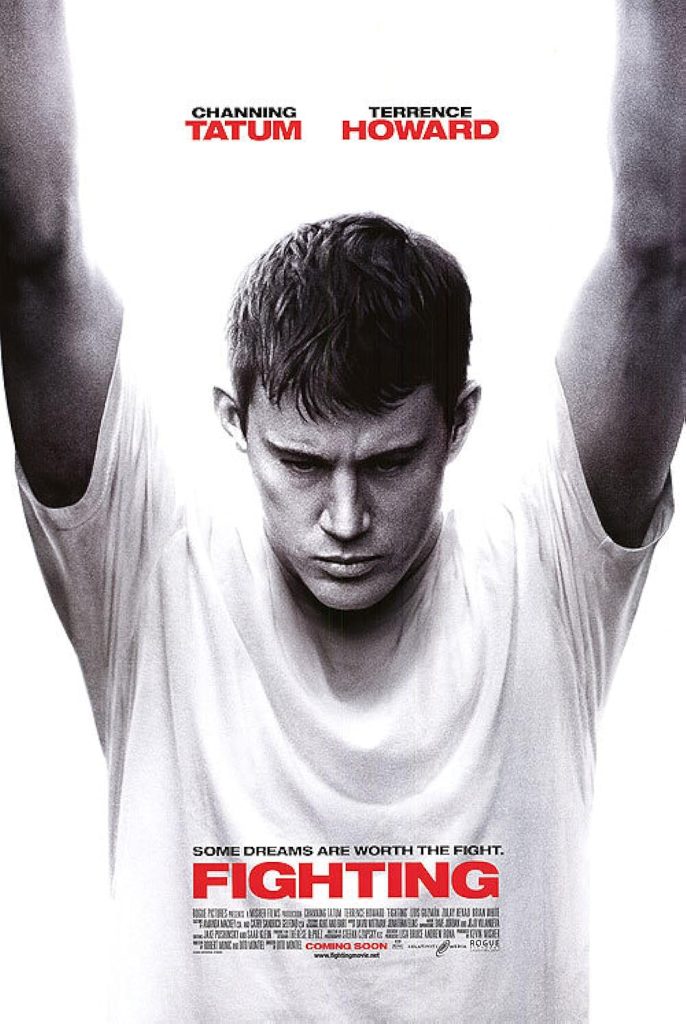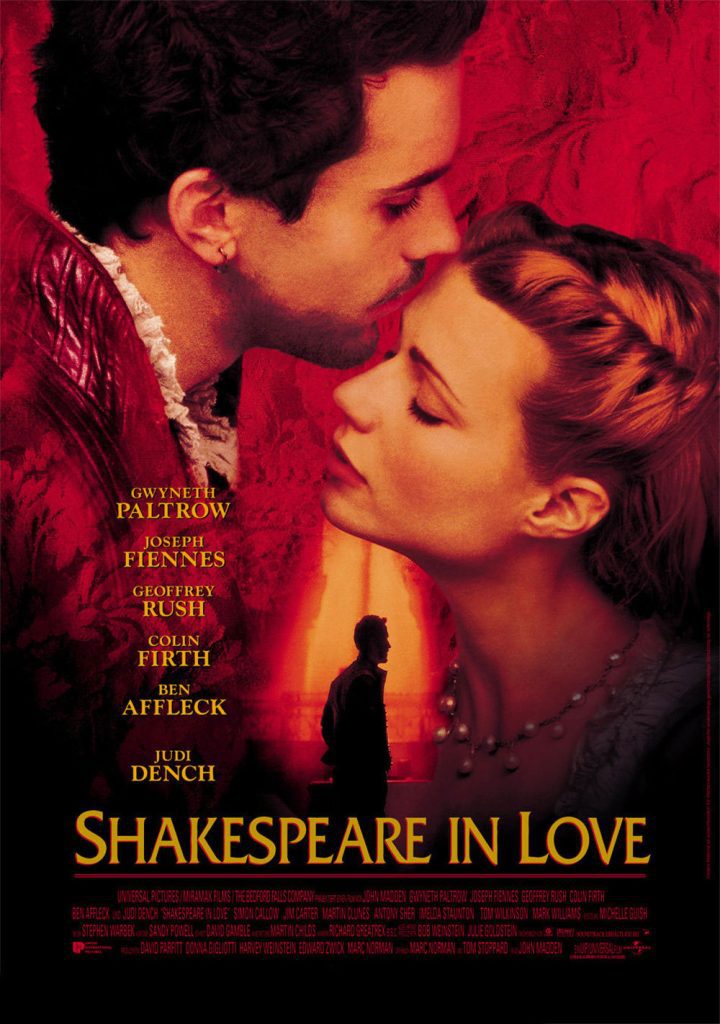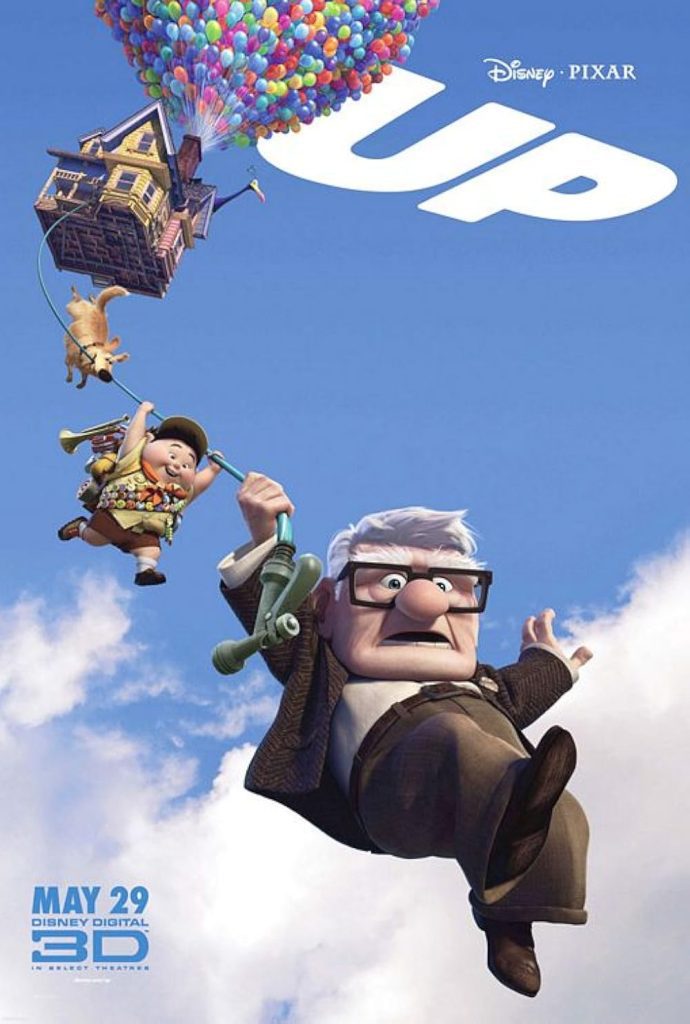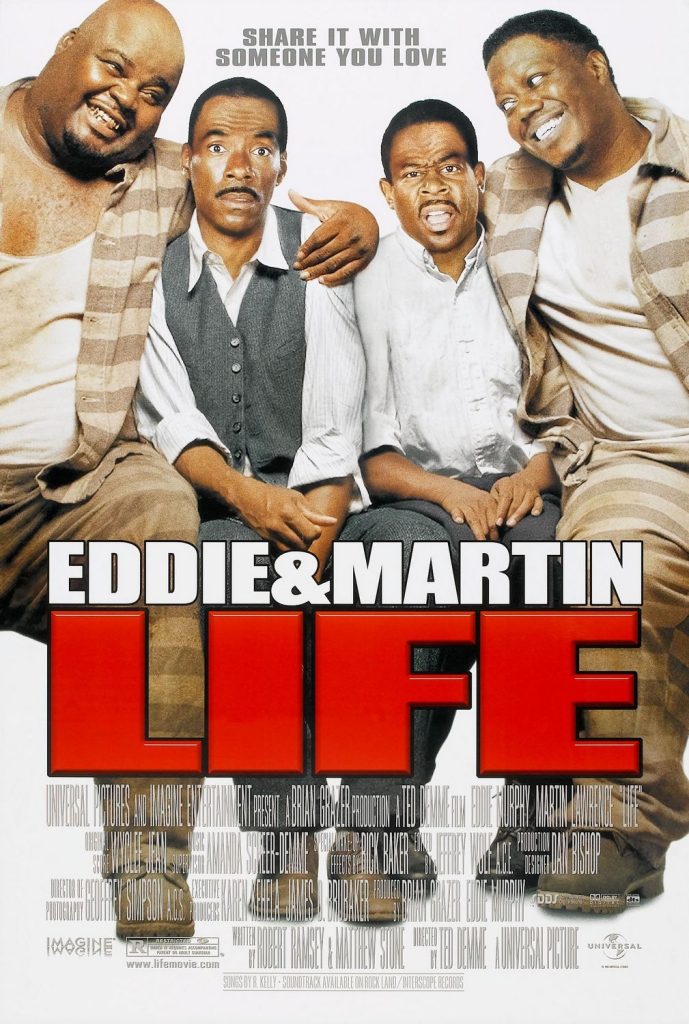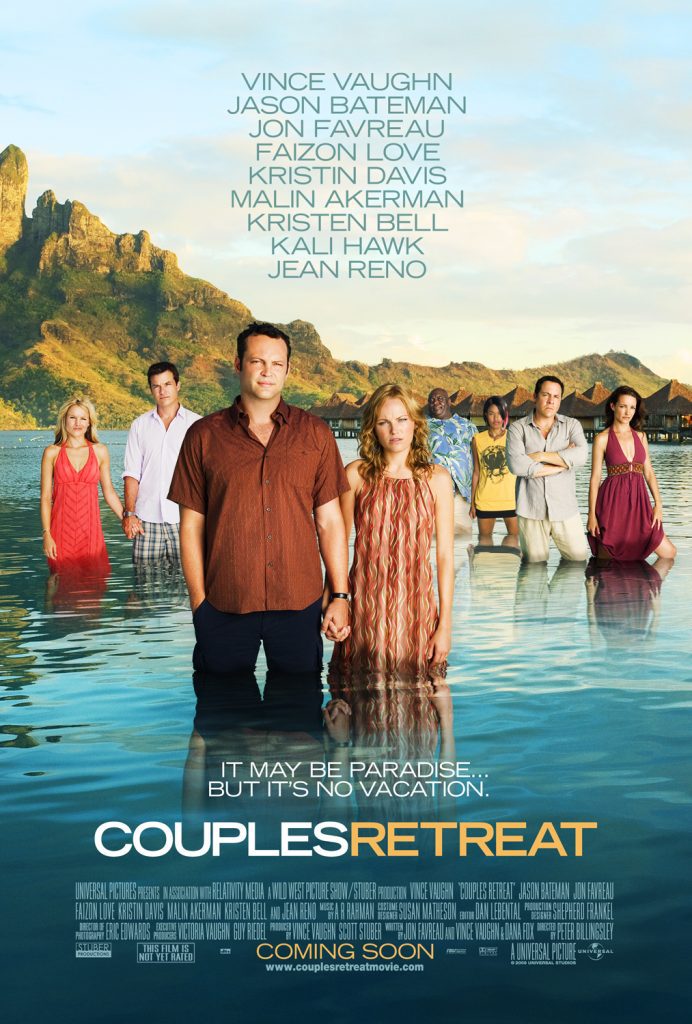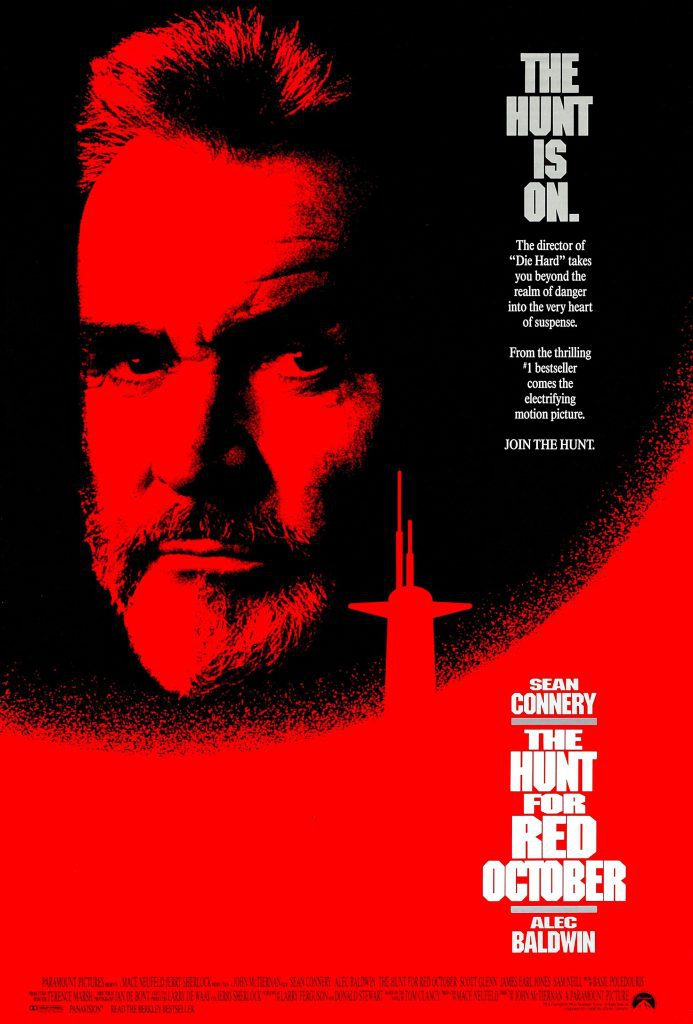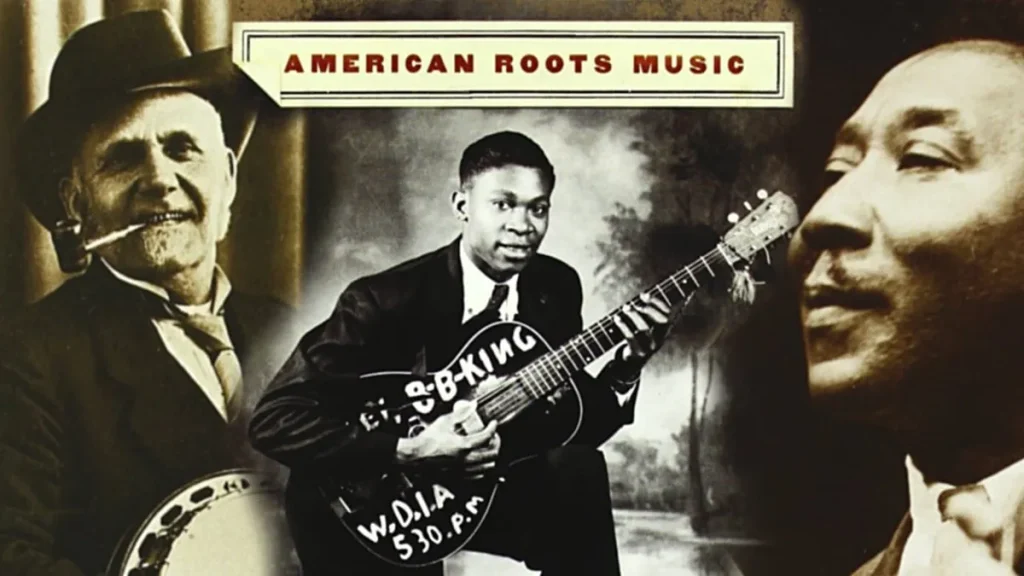
American roots music is a collective name for the various music genres such as country, blues, gospel, folk, bluegrass, Cajun, zydeco, tejano, and Native American. In 2001, a collaborative effort between the Library of Congress, the Smithsonian Institute, the Rock and Roll Hall of Fame and Museum, the Country Music Hall of Fame and Museum, Experience Music Project, Palm Pictures, and Ginger Group Productions resulted in a four-hour production entitled American Roots Music that explored the history and evolution of the various roots music genres. The series aired on PBS. Palm Pictures has now made the series available on DVD in a two-disc box set.
The history of American Roots Music is presented in a four part series that utilizes music clips and interviews with both original and contemporary artists, music scholars, and entrepreneurs.
Part One — “When First Unto This Country.” The first episode documents the emergence of roots music as a consequence of the country’s original European and African influences and identifies some of the early turning points including: the Fisk Jubilee Singers’ popularization of African-American spirituals; Ralph Peer’s recordings of the Carter Family and Jimmy Rodgers signaling the birth of country music; the appearance of the Grand Ole Opry; and the role of Thomas Dorsey in gospel music. The importance of radio in introducing such music to wider audiences and the resulting cross-fertilization is outlined.
Part Two — “This Land Was Made for You and Me.” This episode concentrates on the evolution of roots music due to the visibility and commercialization afforded by movies, television, radio and records, as well as the social changes brought about by major events of the middle of the 20th century the depression and labour unrest, World War II, urban migration, and the McCarthy era. Among the topics covered are Bob Wills and the development of western swing, the creation of bluegrass, honkytonk innovations from Ernest Tubb and Lefty Frizzell, the folk revival with Woody Guthrie and Lead Belly, and the origins of the blues.
Part Three — “The Times They Are A-Changin’.” The folk and blues revivals of the 1950s and 1960s are identified as creating a new national awareness of roots music as these music genres become identified with the civil rights and anti-war movements. Bob Dylan and Joan Baez become household names as a result. The electrification of the blues featuring the likes of Muddy Waters is one product of continuing urban migration. Gospel experiences a renaissance with Rosetta Tharpe and Mahalia Jackson in the forefront. Folk festivals begin to offer mixtures of blues, gospel, and country, along with the popular protest singers of the time.
Part Four — “All My Children of the Sun.” The final episode focuses on diverse ethnic music previously excluded from consideration as roots music. The music of the Cajun culture of southwest Louisiana, its black interpretation (zydeco), Tex-Mex or tejano music of southern Texas, and the evolution of Native American music are all presented.
This is a wonderful presentation of little-known material that sheds a lot of light on the what, where, when ,why, how, and who of the many roots music genres whose names we all recognize, but can’t always explain what they are and how they differ from each other. There is a remarkable collection of vintage footage included in the almost four hours of material and it is nicely integrated with comments from the original artists where possible, contemporary artists who have brought their own interpretations to the various genres, music producers, and “friends” of roots music. Among those interviewed are: Pete Seeger, Bonnie Raitt, Arlo Guthrie, Ricky Skaggs, Keb’ Mo’, Earl Scruggs, Merle Haggard, Arlo Guthrie, Kitty Wells, B.B. King, Mavis Staples, Peter Yarrow, James Cotton, Marc and Ann Savoy, Flaco Jiminez, Robbie Robertson, and Robert Mirabal. Kris Kristofferson provides a nice low-key narration throughout.
In a way, one’s appetite is just whetted by what we see. After all, if Ken Burns needed ten hours (or whatever it was) to document jazz, and even then was taken to task for glossing over some aspects too quickly, you can imagine how much more time is really needed to get a full appreciation of all the roots genres covered here in less than half the time. That leads to the one problem with the series (but also see below). In nearly every instance, we don’t have the opportunity to experience hearing and seeing the full performances. Songs just seem to get started, and then the music fades to be replaced by a voice-over from one of the interviewees. I know it was a production decision that was necessary in order to cover all the material in the time allowed, but it is frustrating nonetheless.
For myself, the material on the first two episodes is the most intriguing because it documents eras about which I had no prior knowledge. While I have a casual awareness of many of the roots music genres, I was completely unfamiliar with their historical background. I’d never heard of the Fisk Jubilee Singers, Uncle Jimmy Thompson, Blind Lemon Jefferson, the Bristol recordings, Thomas Dorsey, Bob Wills, Bill Monroe, or even Doc Watson. The value of all this is that it not only brings the history out of the shadows, but gives you a chance to see some of the key musicians’ original performances. It’s fabulous material.
The final two episodes cover material that will be more familiar to many readers with many of the principals discussed still very much with us. The third episode was for me perhaps slightly weaker than the others because it failed to clarify some of the differences between genres differences that have been diffused by extensive genre cross-fertilization and artist crossover. There was still too much of “genre X is really genre Y with a whiff of genre A, B, and C thrown in” which still leaves me in the dark. Nowadays, the music sounds great, but damned if I can tell you whether it’s bluegrass, country, alternative country, country-western, or whatever.
Palm Pictures presents the four-part series on two discs. Each disc contains two episodes, presented full frame in accord with the original television version, plus some supplementary material. The image quality is very good. New material is sharp with excellent colour fidelity. Edge enhancement is kept to a minimum, particularly on the first disc. The archival material looks much rougher, especially the vintage segments, as would be expected. Still, much of it looks remarkably good considering its age. In general, I don’t think anyone will have any problems with how these discs look.
The sound is a Dolby Digital 2.0 Stereo Surround mix. Much of the music reproduction is at the mercy of the advanced age of the original material, and in those instances age-related hiss and crackling can be detected from time to time. Overall, though, music reproduction is clear and not unpleasing. The newly material obviously sounds better, but this will never be mistaken for a pounding, dynamic, modern sound mix (not that you want it to be with much of this music). I did detect some intrusive low frequency effects as though the mix had the bass ratcheted up too much, causing my subwoofer to kick in at inappropriate moments not only during some of the music but also during non-musical portions.
As alluded to above, the supplementary material on the discs does address, if modestly, the concern over not being able to see and hear entire music pieces. Each disc contains three complete music performances, some of which we only see pieces of during the episodes. The first disc contains: “Sitting on Top of the World” by Bob Wills, “Foggy Mountain Breakdown” by Earl Scruggs, and “Never No Mo’ Blues” by Doc Watson, while the second disc includes: “Down by the Riverside” by Sister Rosetta Tharpe, “Ossun Two-Step” by Steve Riley and the Mamou Players, and “Rosalito” by Valerio Longoria.
Both discs also include six-page pamphlet inserts that provide an informative background essay, a detailed American roots music timeline, and chaptering for each episode.
Promotional trailers for other Palm Pictures DVD releases (mainly musical presentations) are also included on each disc.
American roots music gets a great introduction in this two-disc DVD box set that serves up the four episodes that comprised the recent PBS series. Palm Pictures gives the material a nice presentation along with some important supplements that begin to address the series’ only real shortcoming. Of course, it’s all not nearly enough to give the various genres their real due, but it should send you scurrying to the local music store to scare up a few CDs with music by artists you may not have thought of before. Recommended.
For more movies visit Soap2day.
